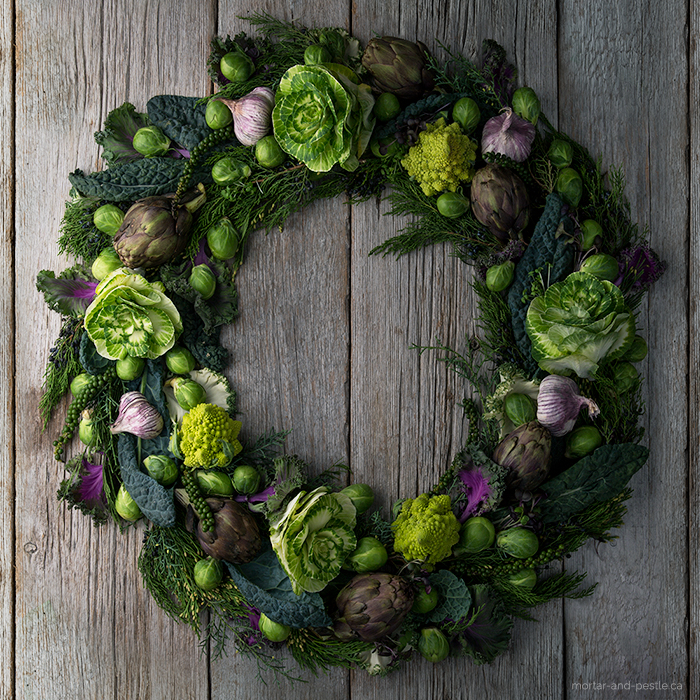
Evergreen
Have you ever wondered why we deck the halls with evergreen trees, wreaths, mistletoe, and boughs of holly? If you think about it, there’s no real connection to the baby Jesus. It’s really a much older tradition than Christmas.
December 13th, 2015 | Text: David Rollins Photography: Rob Lee
Evergreen
Have you ever wondered why we deck the halls with evergreen trees, wreaths, mistletoe, and boughs of holly? If you think about it, there’s no real connection to the baby Jesus. It’s really a much older tradition than Christmas.
December 13th, 2015 | Text: David Rollins Photography: Rob Lee
In the centuries before Christianity took root in Rome, Romans celebrated the Saturnalia in late December. It was an annual celebration that honoured the ‘re-birth’ of the sun and the fertility of the spring to come, and included the exchange of gifts, much merry-making, and the use of greenery to decorate homes. How did these pagan customs become integrated into Christianity? The Roman Catholic Church thought it might be easier for the unconverted to accept a new religion if it felt more like their old one. And so we began celebrating Christmas instead of Saturnalia.
What we eat at Christmas has been decided by a whole host of other interesting factors, but Christmas dinner is one meal in a winter that lasts months. It can be hard to keep meals feeling fresh. Enter the Brassicas. Or the cruciferous vegetables, if that’s what you’re used to calling them. Of all the other once-living things you see at your favourite vegetable store at this time of year, they seem to be the most ‘alive’, in a dual sense: they’re generally what’s freshest, and their vibrant colour speaks to the same deep instincts that compel us to bring green things into the places where we eat, sleep, dream, and pray.
Look closely
at a Brassica
and you can practically
see life pulsing through it.



Their vibrant colour speaks to the same instincts that compel us to bring green things into the places where we eat, sleep, dream, and pray.
If your food choices are at all guided by nutrition, you’re also likely aware that the visual appeal of these vegetables signals deep nutritional value. According to Richard Béliveau, one of the world’s leading researchers into the role of diet in cancer prevention, “a study carried out on five thousand Swedish women suggests that eating one or two daily servings of cruciferous vegetables is linked to a 40% drop in the risk of breast cancer.” In his seminal book Foods that Fight Cancer , he explains how these vegetables have also been associated with a decrease in the risk of many other types of cancer, describing them as “a tumor’s worst enemy.”
Symbolism and nutritional superpowers notwithstanding, we love these vegetables for their flavour. I love the taste of winter cabbage. We do two main things with it: elaborate slaws full of herbs and lemon and sprouts and pomegranate seeds, and then an easy thing we call cabbage and sausages. It’s nothing more than broiled sausages and shredded cabbage in home-made chicken stock with lots of thyme. It’s surprisingly comforting, especially if you sweat the cabbage in lots of butter first.
And cauliflower, which gets puréed to go under stew instead of potatoes, or roasted with curry powder and black mustard seeds. Broccolini is a new favourite – the stems are sweet as candy. And then there are Brussels sprouts. Roasted alongside chicken pieces and lemon wedges, or sliced into chiffonade and sautéed with butter, lemon and poppy seeds. Or torn apart leaf-by-leaf and crisped up in bacon fat, as in this variation on the classic salade lyonnaise. Hard to believe something this delicious is also helping prevent cancer. I guess there’s something to be said for following your best instincts.


Brussels sprouts ‘lyonnaise’
This hearty twist on the classic salad of frisée, lardons, and poached eggs is the ingenious invention of Joe Jack, of Joe Jack’s Fish Shack in Puerto Vallarta, Mexico. This is how we do it at home. The vinaigrette is entirely Alice Waters’. Her invitation to explore the relationship of vinegar and salt is revelatory. This is wonderful with poached eggs, but we prefer fried eggs that are really, really crispy.
Serves 2
For the vinaigrette:
- 1 medium shallot, minced
- 2 tbsp. red wine vinegar
- about ½ tsp. salt
- ½ tsp. black pepper
- 1/4 tsp. dried thyme
- 1 tsp. Dijon mustard
- 6-8 tbsp. olive oil
- a few drops of lemon juice
For the salad:
- 1 lb. of smoked pork belly, cut into fat matchsticks (lardons)
- about 2 lbs. of large, leafy Brussels sprouts
- 2 fried eggs
Make the vinaigrette. In a salad bowl, macerate the shallot with the vinegar for 10 minutes. Add the salt a little at a time, tasting as you go. Stop when the salt and vinegar taste balanced. Whisk in the pepper, thyme, and mustard. Macerate a further 5 minutes. Whisk in the olive oil, in a thin stream, until the vinaigrette is starting to ‘set up’, without turning into mayonnaise. Brighten with a few drops of lemon juice.
Trim the stem end off of the Brussels sprouts, and peel off as many individual leaves as you can. You’ll need about 4 cups – more than you think, as their volume reduces while cooking.
Set the lardons cooking over high heat with 2 tbsp. of water in a large, heavy-bottomed pan. Cook until evenly browned and caramelized, but not too crispy. Drain out all but 2 tbsp. of the fat. Without reducing the heat, add the Brussels sprout leaves, and sautée until the leaves turn bright green, and some are half-wilted, and some are half-crisped. Salting them very lightly halfway into their cooking will help soften them and preserve their colour. Toss the leaves and lardons in the vinaigrette, and top with fried eggs.



